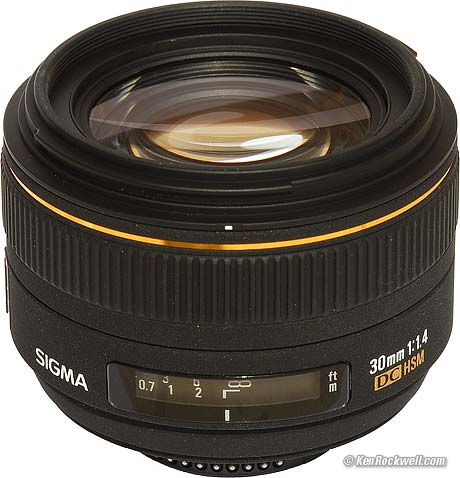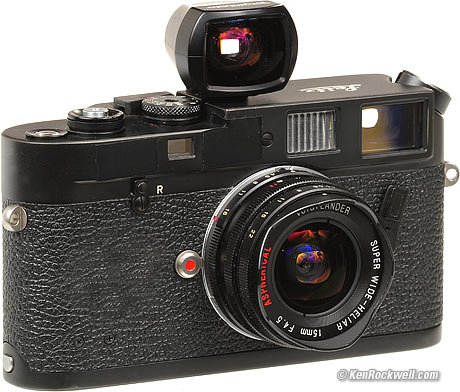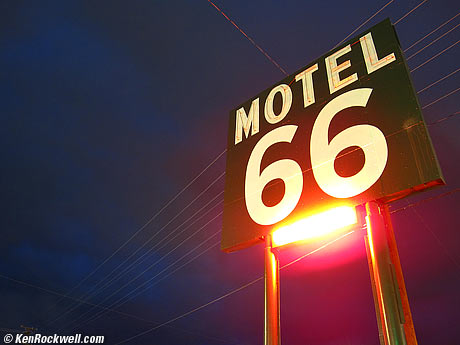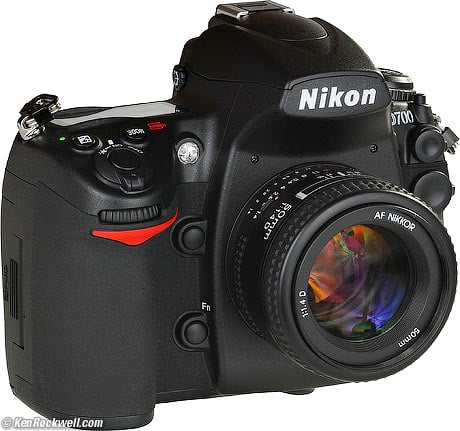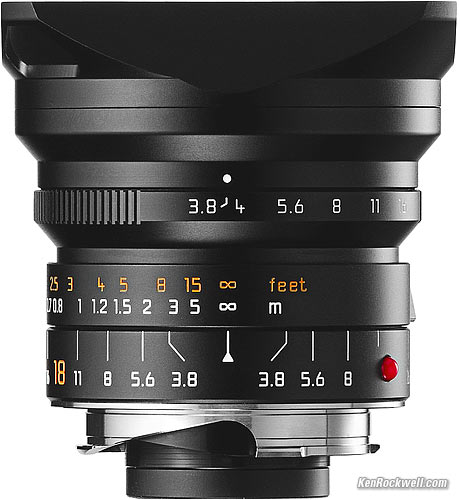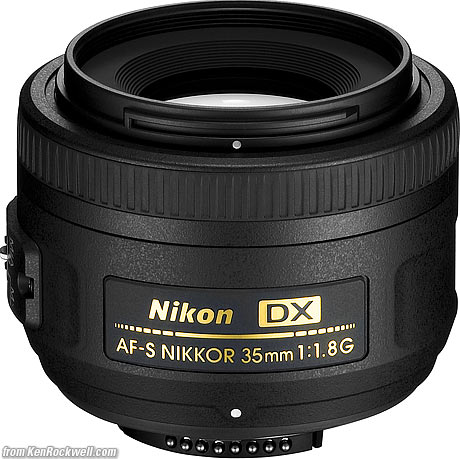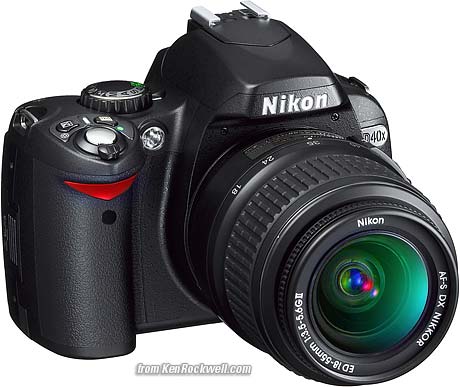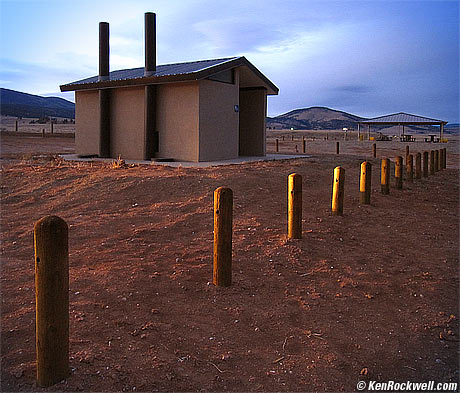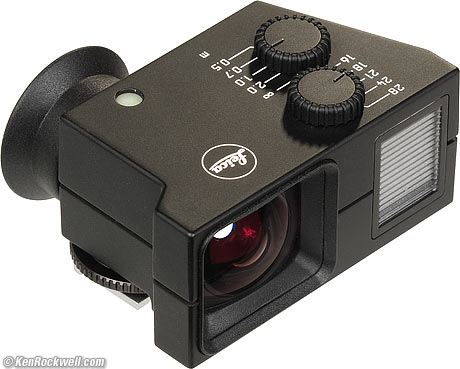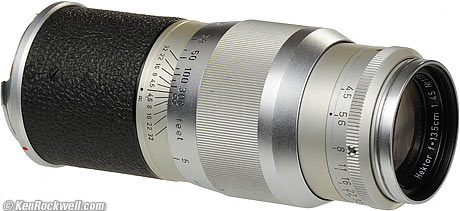Home Search Gallery How-To Books Links Workshops About Contact
February 2009's
Updates RSS
all © 2009 KenRockwell.com. All rights
reserved.
|
I personally buy from Adorama, Amazon, Ritz, B&H, Calumet and J&R. I can't vouch for ads below.
|
27 February 2009, Friday
NEW: EPSON R-D1X Digital Rangefinder body
Film Keeps Growing
While writing my Photo Labs article, I got some sales numbers from NCPS, my local good lab.
Their business is up 16% from last year, but if you only look at their E-6 (transparency film) processing, their business is up a whopping 88% from last year.
As the dumpier labs close, the good ones keep growing. Hooray!
I guess it's not just me who's seeing the light (and color) which makes film so much better than digital.
NEW: Photo Labs. Here's where I print my work, as well as where I have it developed and scanned.
I'm amazed that you people let me get away these past 9+ years without ever putting up a list of photo labs.
Even if you only shoot digital, you need these places to make prints. No one, except people paid by Epson, HP and Canon to promote them, has used inkjet printers since the 1990s.
Deals
Adorama has the Canon SD890 on sale for $199.95. The SD890 is a 4x IS zoom (37-185mm equiv.) with a 2.5" LCD and 10MP.
Adorama has the new Gossen Digiflash on sale for the same $199.95. The Digiflash is the flash version of my favorite Digisix.
Why do you care about meters? Because you can pop it into the hot shoe of your D40 and use it to meter with every old Nikon AI and non-AI manual focus lens!
Adorama's lab is also doing photo books. I haven't tried them.
Photoshop 11.0.1 Update
Photoshop 11.0.1 is out.
This minor update simply addresses a couple of small fixes. You can update through Photoshop itself, or here (or here if you're on Windows.)
Sigma 30mm f/1.4.
OLD: Sigma 30mm f/1.4 Review. You've been asking me to review this, so for those of you too proud to use my Search link, here's the link to the review I did two years ago.
For those of you whining about me addressing real photography for a change, you have to realize that I've already covered this digital stuff years ago. It's time to come home to film, at least if pictures matter to you.
Voigtländer 15mm on a Leica M4-P.
NEW: Voigtländer 15mm f/4.5 Review. Not just good for the money, this little lens is actually better than the Leica ultrawide lenses! Strange, but good our wallets!
26 February 2009, Thursday
45mm Contax G, conversion, and Leica 50mm lenses.
NEW: Contax G Lenses for Leica M. Strange but true, you can buy Contax G lenses that have been converted to work on Leica M cameras.
Holy Cow: Check out DxOMark.com. These guys are the one and only source where all digital camera sensors have been tested scientifically and then have their data presented in a useful way.
Astoundingly, the Nikon D3X is the best thing tested, even better than the Leaf Aptus75S, Phase One P45 Plus and Hasselblad H3D II 39 five-figure medium format cameras. How can this be? Simple: Nikon has vastly more engineering and manufacturing resources than any of the smaller medium format makers. Nikon has come so far with the D3X that its sensor, in terms of noise, high ISOs and color sensitivity, is superior.
Click the DxO Mark tab on their site and have at it.
What makes DxO so much different than any website or magazine is that DxO is a technology company with engineers and scientists who have done all these tests scientifically in a real commercial lab, not a hodge-podge in some magazine's attempt at a fake lab.
Magazines and websites at best have technicians, not degreed design engineers. DxO does their DxOMark website not so much as a website, but mostly to showcase DxO's talents at optical device characterization and analysis to engineers at places like Nokia and Ericsson, to whom DxO helps to sell its services.
This means we all benefit collaterally from DxO's DxOMark website, and why it has so much more data presented so much more clearly than anything else I've ever seen at D Preview, my own site, or wherever.
Of course looking at all the data is fun, and it also goes to show some things I've said all along.
1.) There is very little difference among cameras in a similar class. Anything less than 5 points on the DxOMArk scale is invisible (1/3 stop).
2.) Highest good-looking ISOs (the Low-Light ISO tab under the DXoMark tab) are the same among cameras. Even though we can see the precisely measured ISO 2,303 for the D700 and merely ISO 1,815 for the 5D Mark II, these are within a third of a stop. That's why I don't spend time on this in my reviews: cameras with similar size sensors of similar classes are largely the same.
Of course as soon as you step down to DX SLRs, they are in a class below, and compact cameras are abysmal.
3.) No digital camera has a clean enough signal to warrant any more than 8 log bits for a final image. Click Image Quality Database, pick your camera, pick SNR 18%, and even the D3X, D3 and D700 can't muster a 40dB SNR, which is only 6.4 effective bits (ENOB). I realize this is beyond many of you, but it's why 8-bit JPGs and 8-bit Photoshop files are just fine once you've got your image properly adjusted.
It's great that DxO has once and for all measured all this in controlled scientific conditions so that we can compare everything on a level playing field. Magazines and websites are both not truly scientific (although they attempt to pretend), and they try too hard to make everything look good, and the most expensive look best. DxO's interest is to show everything as precisely and accurately as possible.
25 February 2009, Wednesday
Accolades
I didn't think much of it when I spat out "No More Whining" yesterday, but it's already received critical acclaim by Dean Zatkowsky on Kinko's founder Paul Orfalea's blog.
24 February 2009, Tuesday
NEW: Respecting Retail.
Printing Deal
Adorama's lab's print special expires tomorrow: 14¢ 4x6," $1.19 11x14" prints, and other sizes, too.
N. David King
I went to my club meeting last week and heard an unusually informative talk by N. David King, a long time artist and photo teacher.
Unlike the talks we expect from photographers, most of which just spew out-of-context facts that add up to nothing, N. David King gave one of the clearest illustrated tech talks I've ever watched.
If you ever get a chance to hear him (or take one of his classes at San Diego City College), I'd do it.
People are always trying to hire me to travel around the world to talk, which is fine, but you might also want to ask David.
NEW: No More Whining.
22 February 2009, Sunday
Life Looks Better on Film
As we all know, film is the way to go when the picture matters.
The front cover of the current March, 2009 Popular Photography was shot with a Nikon F100 on Provia 100, and the most spectacular shot I've seen in a long time, the B&W over/underwater spread on pages 54-55, was shot on a Nikon F4.
Enough said?
Magazines talk digital because that's what everyone wants to buy. Magazines are funded by advertisers, who are trying to sell what people want to buy.
Commercial websites are funded by the same, and if not, are usually run by computer hobbyists who can never spend enough time in front of their computers.
Sure, digital was popular throughout most of the first decade of the 2000s, but for the best quality, film has always been the way when you know what you're doing.
It's cheap, too. You can buy an F4 for just a couple of hundred dollars, and F100s are so cheap that people have given them to me. Someone else just gave me a Nikon FM and two beautiful Nikkor AI lenses in almost unused condition that another person was throwing away!
All because commercial media can't support itself talking about real photography doens't mean that you shouldn't be doing it.
I talk about film because I do this for fun, and I know how good it is.
21 February 2009, Saturday
Leica 35mm f/2 ASPH.
NEW: Leica 35mm f/2 ASPH Review. A perfect lens.
20 February 2009, Friday
Motel 66, Route 66.
NEW: 2009 Route 66 Photo Gallery, complete with technical trivia.
Rumor: Nikon D5000. We'll know by March 3rd.
19 February 2009, Thursday
Nikon D700.
Nikon D700 and D300 Users Guides in PDF
NEW: You asked, so here they are: The PDF version of my Nikon D700 User's Guide and the PDF Version of my Nikon D300 Users Guide.
If Nikon has nothing except a BIG nothing to announce at WPPI, the least I can do is share something we all can use.
These guides aren't any fun for me to write, since I'd rather be out shooting. Heck, I had started trying to post photos from Route 66 last week, and got distracted on this. It took me three hours this morning just to finalize and post these two PDF files I had sitting in my computer since last year, much less having spent months writing the original online guides this summer.
Please enjoy reading whatever you want online for free as always, but if you want to print or save them, I require a $5 license fee for any or either. Someone has to keep the lights on around here, and $5 is a lot less than $29.95 for other PDF guides.
If you want to make a print for yourself, your honesty is what keeps my wife thinking I'm really working on something on my computer so she doesn't send me back out to get a real job again, and hey, if you can afford a D300 or D700, you can afford to pay five bucks if you want to print my guide. Either costs more than the used Leica I just got: you Nikon digital guys must be loaded. You don't have to print either guide if you can't afford the $5; I know times are tough and not printing it will also save you paper and ink, too.
I'm sure hoping I don't have to take the time to start charging in advance for PDFs; the busywork involved would take so much time away from writing actual content that I'd never get anything done again.
If you've already contributed or got your stuff through my links, you've already done your part. Thanks and please enjoy the PDFs!
Thanks!
Ken
Killer Robots: Less useful today but much more important: Fox News: Kiler Robot Rebellion Coming and the same report elsewhere.
Leica M8.2
So where's my Leica M8.2 review?
It's coming, but first I need to be able to muster enough Leica lenses and other parts of the system here at one time so I can make an intelligent evaluation.
Nikon and Canon are easy because I have access to just about anything, but Leica is tougher because it's less common. My friends and neighbors don't have Leicas.
18 February 2009 (18/2/9: 18 = 2*9, get it?)
Leica 18mm f/3.8 ASPH.
NEW: Leica 18mm f/3.8 ASPH.
This is arguably the most important new product from Leica in over 50 years. It sure beats out Nikon's BIG-screwup last night at WPPI.
This lens is something we can use, unlike John Denver commemoratives.
Leica introduced a 21mm f/4 lens back in 1958, and ever since 1958, Leica has never introduced any other fixed lens that was wider.
Sure, newer cameras add through-the-lens metering and auto exposure, but if you meter externally, even the M3 of 1954 works identically to any other Leica used with ultrawide lenses, because you need to use an external finder with 24mm, 21mm and 18mm lenses with every Leica anyway.
This is the first new product from Leica in a very long time that lets us shoot and see things in new ways. All the camera introductions have been merely refinements, not epiphanies.
New: 10 New Compact cameras from Canon.
My favorite has been the Canon SD880 since last year, for its 28mm equivalent lens, 3" LCD and superb control layout, and I see no replacement for it.
Check out the new $330 Canon D10 tough camera, and the Canon SX200 with a 12x zoom starting at 28mm equivalent and a 3" LCD for all of $350.
17 February 2009, Tuesday
HA HA! It was so funny that I couldn't sleep at all last night.
Nikon had been pimping a BIG announcement of its MX camera at WPPI's BIG night for months.
Whatever it was, it was a product announcement so Earth-shattering and so definite that Nikon stuck its neck out for months promoting it.
Some thought it was the MX/M1 camera system, which I don't expect for another few weeks at least, or more likely, a large-format printer we could all forget about. (WPPI are wedding and portrait photographers who love to sell prints.)
What did we get after months of teasing?
Nothing!
All WPPI attendees got was a hastily-booked Blues Traveler concert instead when Nikon couldn't deliver the goods.
I almost went out to Vegas to cover it, based purely on that tease. I'm glad I stayed home.
All of us in product development have seen this happen before. When a drug company spends millions of dollars just on the sales launch meeting for a new drug, but the expected FDA approval falls through the week before, the drug company cancels all the rooms and entertainment and has to eat the cost.
In technology, when you hit a major program snag, or new market data shows you that you need to cancel the project, you get stuck this same way.
Nikon hit a really big problem, which is why we got a minor concert instead of a BIG announcement.
Even if Nikon booked a BIG international act months in advance, like the Moscow Philharmonic Orchestra (they are a BIG orchestra with like 12 bass fiddles, 5 harpists and too many other smaller instruments to count) or Seal, it still wouldn't be the announcement they promised, even if it was BIG.
Do we really expect BIG from a Japanese company? No. Japanese products are all about small, like Nikon's 45 nanometer steppers.
If Nikon really had something BIG to announce, like having landed men on the Moon and returning them to safely Earth, they would have had to have made the announcement someplace BIG, like Texas.
Have you ever stood under a Saturn V rocket? It's BIG. A Saturn V is hundreds of feet long and is mostly hollow, holding millions of gallons of high-explosive liquid fuel which was torched off to send Americans to the moon almost 40 years ago.
Oh well. Nikon botched BIG. The only thing BIG about it was that it was a huge failure and a humongous embarrassment. Nikon loss-of-face was incredibly BIG, so in this way, it was a success. Yay!
Did our very successful ongoing boycott of the D3X, sparked by Nikon's predatory introductory pricing, make Nikon re-think the market viability of an even more expensive MX system? Did Nikon realize that since no one is buying the D3X at $8,000, that they won't be able to get $9,999 for the M1 body, and because of that, cancel the MX program indefinitely?
The sad part is that it just might have. Big corporations often make decisions that we, as individuals, know are stupid. We all know the D3X isn't worth a penny over $5,199, but that I'd happily blow ten Gs on an M1 body.
If Nikon is dumb enough to think that we are dumb enough not to know the difference between a D3X and an M1, Nikon might have killed the M1, at least for the moment. Even if development snags happened, Nikon certainly could have shown mock-ups — if it wanted to.
On a lighter note, the real show, the industry-only PMA where all the new stuff for the spring really does get announced each year, comes up in a few weeks.
I'd put money on Nikon coming out with one or two new DSLRs in the next few weeks. The D40 is due for replacement (too bad, since it is my favorite digital SLR), and we'll see about a 24MP variant of the D700. And maybe the M1? Who knows.
The only thing we do know is that products can have functioning prototypes and everything, and still get postponed or killed at the very last second.
I doubt we'll see the M1 any time soon. Nikon went way out of its way to book and promote the WPPI event, and if it was going to unveil the product which it had planed, WPPI would have been the place. It's unlikely that PMAI could have cajoled Nikon into making the PMA show the coming-out show for whatever was so BIG.
Nikon's mistake was so egregious that it's already become a page in business textbooks of what not to do.
16 February 2009, Monday
Market Preview: The Nikon M1 and MX System.
Leica Rebates never left: Leica, who scared me into buying a 28mm f/2.8 ASPH before the rebate ran out on December 31st, 2008, extended that rebate through January 31st, 2009.
The M8 (half-frame) rebate is no more, but the $300 rebate on all but Leica's most expensive lenses came back, now good through 30 April 2009.
The Mamiya 7 Still Rules
In case I forget to say it each day, the compact, hand-holdable, medium format (6x7cm) Mamiya 7 is the word's best camera system for ultra-high quality landscape photos with a small camera.
It way outperforms anything digital or in 35mm, especially Leica or the D3X, and it costs much less than serious digital or Leica gear.
The only reason I don't spout off on it every day is because of all the new garbage that comes in that you folks want me to review.
For those who actually shoot outdoors, if you don't want to shoot 4x5," get a Mamiya 7, the 43mm lens, the 150mm lens and maybe the 80mm lens, and you're done.
I'm a huge fan of the 43mm, but if you're not, all the Mamiya 7 lenses are just about perfect. The only reason you need to pick among them is that they make more focal lengths that you'll want to carry with you; their optics are without fault.
RealRaw Suggestions
I've been reviewing Leica lately because it's cheap, especially used, compared to the foolish Nikon D3X.
I wouldn't buy a Leica if money mattered. I only got one because I had money earmarked for a D3X, but when Nikon's price was stupid, I put that money instead into a complete Leica system and I got cash back!
If money matters, the Contax G2 is at least as good as Leica, and you can buy a complete used Contax G2 system for less than the cost of one Leica used body or lens alone.
Even less expensive, a Nikon FE or FM and a couple of cheap Nikkor lenses will get you a state-of-the art system for just a few hundred bucks. Used properly, I couldn't tell the difference between different images made with the Nikkor 28mm f/2.8 AI, which sells for $50 used, and the newest Leica 28mm f/2.8 ASPH, which sells for $1,800 new. The difference between lenses if how well they work when you use them improperly.
For even less, an Olympus Trip 35 or 35RC ($5 ~ $20 each used) ought to be perfect, if you don't need to change lenses. Don't forget about the Olympus XA2, which goes in your pocket!
Using only one lens, like Cartier-Bresson, will help you take much better pictures than diddling between several. As Ted Orland said, having more than one lens assures you that you'll always have the wrong lens on the camera!!
Brenda Tharp's Blog: I never knew that Brenda Tharp, author of my favorite single book on photography, has a blog. Well, of course, and here it is.
Alethea Wins! Whoo hoo! My pal Alethea Steingisser won Outdoor Photographer's People's Choice award. She does great stuff.
Deal: Adorama has refurbished orange Canon A470s on sale for $65! It's got a 3.4x zoom (about 38-132mm equivalent), a 2.5" LCD and runs on two AA cells. I'd get these by the dozen if you're doing any schools or organizational projects where you need a lot of great little cameras. I don't see that any SD cards are included, so be sure to buy a bunch of those, too.
14 February 2009, Valentine's Day
Nikon 35mm f/1.8.
NEW: Nikon 35mm f/1.8 DX. A super little $200 lens for your D40, or a refurbished D40X on sale for $300.
Updated: I added a bunch of experience to my Leica M7 review.
13 February 2009, Friday the 13th
Nikon D40X
D40x Deal: Adorama has refurbished D40x bodies for just $300! I prefer the cheaper D40 for its 1/500 sync, but for $275, I'd have no problem getting the higher-resolution D40X.
NEW: Leica 21mm Lenses: 1958-today. A tabulation of over 50 years of 21mm lenses.
Updated: There are more photos and details at Leica 21mm Viewfinders, especially of the current 12 013 Japanese zoom finder.
12 February 2009, Thursday
Microstock Photography
Microstock Photography is websites that sell the use of images to people who need photographs for publication, for about a dollar apiece.
As a photographer, you spam these sites with a zillion of your own images as you keep shooting them in the hope that these sites sell the use of some.
You used to get paid about 25¢ each when they do, and today it can hit much more. More important is that you can sell images 200 times a day if you play your cards right.
iStockPhoto.com was one of the first microstock websites. When I first heard their sales pitches to graphic designers, I figured photographers were doomed, since anyone can get all the images they need for a few bucks apiece. Why would anyone ever hire a pro again? I wouldn't.
With all the amateurs snapping away in digital, places like iStockPhoto eliminated the transactional friction which kept old-fashioned stock photo agency prices high. With 1,000,000 monkeys snapping away and uploading photos, a few of them are bound to be good enough for a dollar.
In spite of me thinking that selling the use of images for a few bucks apiece spelt the end of commercial photography and the end of any photographer being able to make any money at stock photography, the guy who started iStockPhoto sold the website to Getty in 2006 for $50 million dollars.
The reason these people make so much money selling the use of images for cheap is because there are so many people who want to use images. It's all about volume.
I don't participate in any of this, but my pal Laurin Rinder sent me his book-on-CD about how to make money in microstock photography. It's a 150-page slide show PDF on CD that's about half related to general photo tips (the same ones you probably already know) and about 40% actually about how to try to make money with microstock photography.
I've never researched anyplace else to learn about this, so Laurin's CD is the only source I know. It's not a book; it's a slide show as a printable PDF on CD, which I saw, and also the same thing available online somehow. Each PDF page has somewhat less on it than a printed book page. If you're interested, you can check it out at Laurin's site.
I think the price is high for a simple download or PDF file, but I've never shopped for downloads. I'll leave this judgment to you. Check it out if you're interested in microstock, which could be a painless way to let your snaps earn money for you all by themselves.
I didn't see any microstock agencies listed by name or much mention of actual experiance from my short read of Laurin's PDF, but it's trivial to find the current microstock sites online. Since this market changes quickly, anything Laurin could have listed could have gone obsolete by the time you get it.
Again, I know nothing of micrtostock and leave it to you to figure out if it makes sense for you. I hear there are plenty of full-time pros who do it.
10 February 2009, Tuesday
Just a pit toilet, or colors, shapes and patterns?
NEW: Composition. The most important thing I've written in the past few years.
07 February 2009, Saturday
Leica 21mm Universal Wide Finder.
NEW: Leica 21mm Viewfinders. You can spend a thousand dollars on just a finder for a Leica. Heck, for half that, you could buy a used Nikon and 20mm lens for even more accurate results, and not need to buy the corresponding Leica camera or lens in the first place!
D40 Replacement
Not to whine prematurely, but Nikon has never stooped to using a plastic lens mount in a digital camera — yet.
It's only a matter of time before they do. They've used them on cheap film cameras, like the N55.
New Site
Check out Rod Edwards, and click on Virtual Tours to see them fill your screen!
It's really impressive and fast on a 30" Apple. It's the only site I've ever seen that does virtual tours properly, which is to open a new screen that fills my screen, and just goes. Every other tour website requires me jerking around in some bogus small, slow window. Rod's site just fills up my huge screen with super-sharp live images, with no waiting.
Our Boycott is Working
A pal just phoned to ask me about the D3X. Nikon Professional Services (NPS) had just sent him one to try. He wanted to know why it only ran at about 1 frame per second in 14-bit raw, and wanted to ask why, after he removed the noise to make the images as clean as his own D3, did the D3X file retain less detail than the D3.
These answers are easy: it's what a camera does when you jam in more pixels. I found that I preferred the D3X files at high ISOs to my D3, but I didn't try removing noise. That's not why I write this.
I write this because the pal is a third-stringer. He's not one of the first-string guys that Nikon pays for their endorsements in camera brochures. He's not even second-string.
He's been an NPS member for decades, and this is the first time Nikon has sent him something to try without him having asked to borrow it.
This shows us that Nikon is looking for any way to try to move the D3X off its shelves, because our boycott is giving Nikon a real problem.
This is great! It means our boycott is working, and as the pros who get these loaners don't bite either (this fellow uses his D3 and scaling software to make fantastic mural-sized prints, so he's one of the few guys who might actually want a D3X), Nikon's next step will be rebates.
Remember, a $1,000 rebate later this month on a D3X is still a rip off. We need a $3,000 rebate to make the price of the D3X reasonable, and as soon as we get the D700X, we can all forget the D3X and get back to work.
For journalism, the D3 is still the faster, cleaner camera. Even at the same price, the D3 is the camera most pros want. Few people have any use for a D3X. I'd love one, but I love my $8,000 even more.
D40 Masterpieces
Check out ABQStyle.com, where Donald Peterson shows some of the great work he's done — with a Nikon D40.
Nikon Faithful
For you Nikon faithful, don't worry about me also looking at Leica. Leica makes so few products that I'll have their whole catalog reviewed by the end of this month, just in time to focus on whatever new digital stuff comes out for the spring as it does every year at the PMA show.
Will I review Leica R? Will I review the Olympus OM? Will I review the Reflex-Korelle? It all depends on what I can beg, borrow or buy. The Leica R (35mm SLR) system isn't very interesting to me. Leica R is still stuck back where Nikon was in 1984, and I already have a Nikon.
I remember three years ago when I posted my first Canon review. People were going to emergency rooms all over the world with heart attacks thinking I dropped Nikon. I'm an artist, not a business. I try new crazy things all the time in case I might learn something or find a better way of doing things.
The joke price of the D3X showed us that we can't depend on just one source for all our cameras. We can't blindly sell our souls to one foreign company and expect them to take care of us. We have to stand like men and think for ourselves. Nikon pays us nothing to worship them, so why should we? Freedom isn't free. I started looking for better ideas for high-resolution work, which lead me to Leica.
Big deal. In a few weeks when the new Nikons get announced, you'll have missed nothing. I'll have my hands on them as soon as anyone, and I'll be ticked off if Nikon prices the D40 replacement at $2,599!
I LOVE the D40 kit at its current $410 price. Heck, I loved it when I paid $600 for mine!
04 February 2009, Wednesday
Leica 21mm f/2.8 ASPH.
NEW: Leica 21mm f/2.8 ASPH Review. Leica's best ultrawide ever.
03 February 2009, Tuesday
Leica 135mm f/4.5.
NEW: Leica 135mm f/4.5 Review. Leica's worst lens ever?
NEW: A Complete Leica M-System for Under $4,000. How do you do it?
Honest Journalism: Here in the USA you only read what advertisers want to pay for, but the BBC still says it like it is. Check out their WTF?? report on the bogus BMW X6, a monstrosity that BMW only could build in America.
I don't know that I agree with everything the BBC says about it (I'd only drive something with at least eight cylinders), but I certainly support them saying whatever they feel, especially since BMW buys a lot of ads in their magazines.
I doubt we'd see this honesty in the US car magazines, especially with the newest US journalism laws.
02 February 2009, Monday
Commercial Media
Commercial media, like magazines and most websites, writes to serve itself. Sure, some of the writers try to be truthful, but let's face it: they need to eat, too, and advertisers are what pay their salaries. Subscription rates don't even cover postage!
When car and camera magazines award "Car of the Year," it's because the manufacturer has also agreed to play it up, mention the magazine in the car company's own ads, and to buy an agreed amount of ads in the coming year, too.
When you see "Camera of the Year" or "10 Best Cars of the Year," it means the best products in light of how much money it makes for the magazine.
Just to go to show this to people who don't work in media, check out this "10 Most Embarrassing Award Winners in Automotive History." The writers even admit they knew the cars sucked, but selected them anyway.
(In case I need to mention this for newcomers, I do this site all by myself as a goof, and to make just enough money to keep my wife from making me go out and get a real job again).
iView
iView is the software I use to sort and organize all my images, digital and film. I don't use Lightroom or Aperture.
Evil Microsoft bought iView, so today I'll only use the original untainted (virus-free, etc.) version I bought years ago.
For those of you looking for it, apparently you can get it at the Apple Store in Italy. Otherwise, today MS tries to sell it bundled inside a bunch of other junk.
I'm running version 3.1.3.
Done with Digital?
I've been covering Leica lately. It's about time, since Leica invented much of what we take for granted in minicam photography.
I've always shot film for my serious work. Digital replaced film for my snapshots ten years ago when I got my first Sony Mavica back in 1999.
Nothing's changed.
Of course I'll be covering Nikon and Canon digital cameras-of-the-week like a bad haircut, and it's time to cover some real cameras that won't be forgotten in 18 months, too.
Latest rumors confirm the D700X is coming in the next month, which is before I'm expecting it.
The Nikon D40 is due for replacement, quite likely in the next month, too. I love the D40; it's what I grab first for family vacations and what I used to shoot my Christmas Card. Except for bringing it up to Gen 2 performance and adding a 3" screen, I doubt there's much Nikon could do to improve the D40 , Nikon's best camera in their 90-year history for the price.
My latest foray into Leica has been because Nikon's blunder with the D3X price screw-up opened my eyes to better ways to shoot.
I'd never made a 35mm vs. digital comparison in these past 10 years because it was always such a pain to scan film. It took at least half an hour for me to find a slide, warm up my scanner, and wait around to prescan and tweak and get a file. I'd be darned if I was going to waste that much time to compare apples to orangutans.
Now that the big blockage between film and digital has been washed away by NCPS scanning everything I shoot on film at the same time it's developed, I shoot film as easily as I used to shoot DSLRs.
Since that happened, it was trivial to compare 35mm film to 24MP digital, and when I saw that the results were finally about the same, I promptly returned the D3X and put that cash into some less expensive real cameras: Leica full-frame.
This is really funny. I never would have considered shooting serious work on a format as piddly as 35mm film, but after most people, including myself, had lowered their standards to accept what we've been getting from digital SLRs as good enough, 35mm looks really good by comparison. As you can see at my comparison, 35mm film is a lot better than the Nikon D3 or Canon 5D, and film is a lot easier, less expensive and more fun to shoot for serious work.
Now that I can shoot a small film camera more easily than lugging full-frame digital SLRs into the field, I can leave the DSLRs back in the safe-deposit box and use them only in my studio and for kid snapshots.
Film is the way if you're shooting carefully on a tripod for serious exhibitions, and digital is it for most people most of the time for quick and easy results, especially if things are moving around.
Digital has always been about immediate results for news, sports and action, and film has always been about quality for careful, timeless work.
Which brings me back to the weightless D40. Why do people lug around big heavy DSLRs when they could get further, and therefore make better photos, with a D40? For not much more weight, the D90 makes exactly the same quality images as the D3 at reasonable ISOs at a fraction of the expense in pounds and dollars.
Yay! The D3X is screwed from every direction. It serves Nikon right for trying to take advantage of us.
When am I going to get over the D3X rip-off? When the price stabilizes back at $5,299.
What Was New in:
The end of September, 2008 (Photokina)
The beginning of September, 2008
December 2007: Loads of details about the Nikon D3, D300, 14-24mm and 24-70mm, much of which still isn't on the individual review pages.
November 2007: First hands-on details about the Nikon D3, D300, 14-24mm and 24-70mm, much of which still isn't on the individual review pages.
August 2007 (Loads of new Nikons and Canons)
2006 November - December (includes birth of Ryan Rockwell)
2006 October - November (includes photos from a trip to NY)
Home Search Gallery How-To Books Links Workshops About Contact




